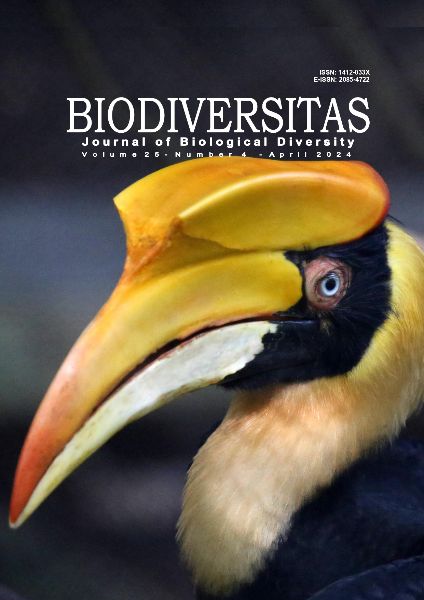Selection assessment of promising forms of natural Hippophae rhamnoides (Elaeagnaceae) populations and their offspring in the Kazakhstan Altai Mountains
##plugins.themes.bootstrap3.article.main##
Abstract
Abstract. Vdovina TA, Isakova EA, Lagus OA, Sumbembayev AA. 2024. Selection assessment of promising forms of natural Hippophae rhamnoides (Elaeagnaceae) populations and their offspring in the Kazakhstan Altai Mountains. Biodiversitas 25: 1809-1822. This article presents the results of studying the genetic diversity of sea buckthorn, Hippophae rhamnoides L. in natural populations of the East Kazakhstan region. This made it possible to identify valuable forms based on which targeted breeding work was carried out. Selection work has shown that this species has a unique gene pool. As a result of the analytical selection of H. rhamnoides in the first, second, and third generations, promising seedlings were obtained: ´Podarok Bajtulinu Sh-9-81 (4-6) II´, ´Jubilejnaja Kotuhova T-2-82 (2-22) III´, ´Dolgozhdannaja ?5 (3-24) III´, ´Shetlastinka ?7 (2-24) III´, ´Nesravnennaja Sh-9-81 (3-27) III´, ´Krasavica Sh-9-81 (3-30) III´, ´Solnyshko Sh-12-81 (1-18) III´ with high yield, large fruits, long stalk and low fruit tearing force. Among the male plants, the following forms are distinguished: ´Gustoj Tuman T-2-82 (1-24) III´, ´Ljubimec T-17-82 (2-20) III´, ´Krasavchik K-8-82 (1-34) III´, ´Bogatyr' T-17-82 (2-20) III´ with high winter hardiness and pollen productivity. A scale has been developed for the force of fruit separation and the density of the “cob” for local forms. A selection achievement (variety) patent was received for the ´Jubilejnaja Kotuhova´ form. The next two forms (´Shetlastinka´ and ´Podarok Bajtulinu´) pass the state test for economic usefulness. The richest gene pool of sea buckthorn in the Altai mountainous country indicates its high heterogeneity.

